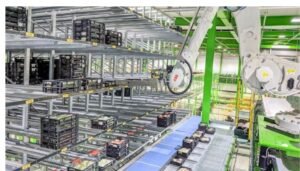Introduction
1.Automated warehouse management:
Automated warehouse management is a method that uses automation technology and systems to manage and control warehouse operations. It realizes the automatic processing, storage, picking and distribution of materials in the warehouse by using technologies such as robots, sensors, automation equipment and software systems. Automated warehouse management systems can improve the efficiency, accuracy and reliability of warehouse operations, reduce human errors and labor costs, while providing real-time inventory tracking and management capabilities.
2.BOM (Bill of Materials):
BOM, or Bill of Materials, is a list or document that lists all the parts, raw materials, and components used to manufacture a product or assemble a finished product. BOM describes the product structure, specifications, quantity and relationship of each component in detail. BOM is usually compiled by engineers or product design teams as an important basis in the production process to guide material procurement, assembly process and quality control.
-
Advantages of integrating robot warehouse management system and BOM
1. Improve the accuracy of material management:
Integrating the robotic warehouse management system with the BOM can realize automated material picking and distribution processes. The system can accurately identify, pick and distribute the required materials based on the detailed information in the BOM, reducing the risk of human errors and improving the accuracy of material management.
2. Improve assembly efficiency and production speed:
Through integration, automated robots can quickly and accurately pick and assemble materials according to the order and specifications specified in the BOM. This can improve assembly efficiency and production speed, reduce waiting time and production cycle, thereby improving overall production capacity.
3. Reduce inventory and costs:
Integrating a robotic warehouse management system with BOM can achieve precise control and optimization of inventory. The system can carry out accurate material procurement and supply planning based on BOM requirements and actual inventory conditions to avoid excessive or insufficient inventory. This reduces inventory holding costs, reduces capital tied up, and avoids the waste of expired and obsolete materials.
4. Improve assembly quality and consistency:
Automated robots assemble according to the assembly steps and specifications specified in the BOM, reducing the occurrence of human errors. This improves assembly quality and consistency, reduces the risk of defective parts and product returns, and enhances customer satisfaction.
5. Flexible production adjustments and changes:
When the BOM needs to be changed, the integrated system can adapt to the changing needs of the production line more quickly and accurately. The system can automatically update relevant material information and inventory status to achieve rapid production adjustments and changes. This can improve the flexibility and responsiveness of the production line to adapt to market changes and changes in customer needs.
- Data analysis and decision support:
The integrated system collects and analyzes data related to materials management and assembly. Combined with BOM information, more in-depth data analysis can be performed to understand indicators such as material usage, assembly efficiency, and quality. These data analyzes can provide support for decision-making, optimize production processes and improve supply chain strategies.

-
Development trend
The integration of robotic warehouse management systems and BOM has many trends and wide application areas in future development:
1. Machine learning and predictive analytics:
By analyzing historical data and market trends, the system can predict material demand, optimize ordering and replenishment strategies, and reduce inventory shortages and excess.
2. Virtual warehousing and cloud services:
Virtual warehousing technology can store and manage material and inventory information in digital form, providing real-time visualization and remote access. Cloud services can provide high availability, elastic expansion and data backup to ensure system stability and reliability.
3. Artificial intelligence and autonomous decision-making:
The system can utilize technologies such as machine learning, deep learning, and natural language processing to achieve autonomous decision-making and intelligent optimization. For example, in the material picking and assembly process, robots can automatically identify and classify materials, select the best path and method, and achieve automation and high efficiency.
These technologies and applications will drive further innovation in material management and assembly, enabling more efficient, smart and sustainable warehouse management and supply chain solutions.


